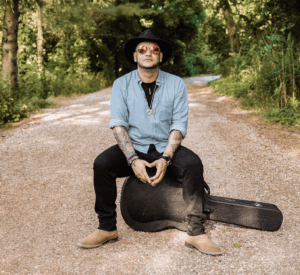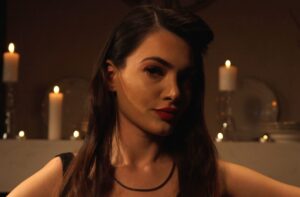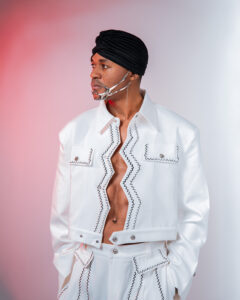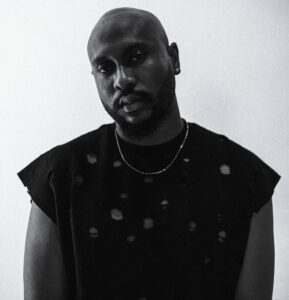Following the release of his expansive genre-bending debut album, Music Crowns caught up with US-based artist ZeXzy to discuss the 28-track offering in more detail, along with his future plans.
Congratulations on the release of Every Sound! What inspired you to create such an expansive, 28-track debut?
I have for the longest time been inspired by different musicians across different genres. These influences comes alive when songs pop in my head as inspiration. When I found out this about myself, I really wanted to intentionally put together songs from different genres to actually show my musical range. Also, being the rebellious artist that I am, I discovered that industry gatekeepers are always trying to pigeonhole musicians into genres, which I really wanted to go up against to show that one can do more than one kind of music effectively.
You’ve described the album as an “odyssey of musical exploration.” What does that journey represent for you personally?
My observation is that, whenever I travel to a new town and go to a popular place where music is played, the sound blaring from speakers is usually the kind of music people in that part of the world love. I remember visiting Florida for the first time and there was a lot of Latin music, Reggaetone to be specific, was in the air most of the time. The radio reflected this sound reality too. Hence, I wanted to do a global tour of sounds. Consequently, this would engender a community of fans who come to one place to hear their favorite music but also get a chance to taste another genre, which they may eventually like more than the one that brought them. I want to do shows that brings people from different parts of the world into one stadium, wherein distant cultures are brought under one roof and they get to experience each others culture. The question for me was – “why be a mom and pop when you can be a departmental store?”
Why was it important for you to push past genre boundaries instead of sticking to one sound?
I get easily bored doing the same genre of music. This is why artistes plateau after a couple of years and fall off the radar. There are popular beat packs and production settings for different genres. This means that there would be a huge repetition of production styles and patterns if you keep doing only that genre. Meanwhile, if you move form sound to sound, you’ve that room to explore other unique beat/production styles which are affiliated with other kinds of music. Also, when it comes to lyrics, different genres have topics that are more popular with them. Someone like me who has different emotions and want to put all of them on wax, I like to use different genres of music to do this. When I want to show my aggressive side, I probably want to use Rock or Rap to do that. When I want to show my soft/romantic side, I want to use RnB and Pop to do that. The overall reason for me though is that I want to be able to express my emotions using different styles that I deem fit for the music.
How did you approach the songwriting and production process for such a wide variety of genres?
I just went about it one day at a time. The first thing I do is to internalize and mull over what I want to achieve. If it takes a foothold on my soul, it just flows out of my subconscious effortlessly. I had already covered most of the genres but found out that I didn’t have anything for Country and Folk. Then I started to play a lot of country music. I was on a flight to LA when I was playing the country playlist, an Air hostess walked in and that’s how I got the song “AIR HOSTESS”. To summarize: I internalize the idea, mull over it for a while, focused on the genre I’m targeting it to be and just allow it flow forth at the right time. I make sure not to force it.
Were there any songs on the album that came together unexpectedly or taught you something new about your artistry?
”STOCKHOLM” kinda checked this box for me. I had been waiting for a Rock song on the album and just woke up from an afternoon nap and started singing the tune. I reluctantly picked my phone and recorded it because I wasn’t too sure it was a great one. I later played it and tried to expatiate on it, got a producer and a drummer to work on the beat. Today, this is the song we’ve come to know as the Rock song on the album. What this taught me is that, I just need to feed my subconscious with the right questions and it will give me the exact answer I want in due time.
“Auria” is a standout — what drew you to explore a Latin-infused sound for that track?
I only wanted to do a REGGAETON track and I know most times they’re done in Spanish. I find the Spanish language very sexy when you use it to say certain things. Also, I loved the music of people like Enrique Iglesias when I was growing up and wanted to have a slice of what it felt like to do a hit song in Spanish, especially given that I’m a Nigerian artiste. This helped me to push myself to use Google translator to write the song, after which my label got me a Spanish teacher to straighten out some lines on the song.
Which track on the album feels the most personal to you, and why?
“SO MUCH” is very personal because the things I spoke about there are some of my innermost thoughts on the decline of man. In fact, I’ve been telling folks that I think man is going through a decivilization. People are rude and think it’s the norm. Male and female genders used to compliment each other for a functional society but now we antagonize one another, sometimes to score cheap points that gets no one anywhere. Still, we continue to do it. This is why I really wanted to talk about these things. The funny thing is that it was one of those songs that didn’t take me long to write because my mind has been inundated and just needed an outlet to offload.
From Afrobeats to Latin, soft rock, jazz, and hip-hop — how do you balance so many influences while keeping your signature sound?
My voice is my signature. I asked a couple of friends if they do recognize my voice on different tracks with distinct styles/genres and they told me yes. That felt good because it means that even though my style is fluid, my voice is solid.
Do you think genre boundaries are becoming less relevant in today’s music industry?
I think it’s only a matter of time before every musician would come around the idea that they cannot keep circling the same space of inspiration. It’s not healthy for sustainable growth. People like Drake and Kanye are already doing that, maybe not as much as yours sincerely but I see them exploring different sounds every now and then.
Which genres on the album pushed you the furthest outside your comfort zone?
The funny thing is that I was comfortable on all the genres. I barely struggled to do any of the songs. That’s why folks nicknames me the “MUSICHAMELEON”. I just become whatever I imagine myself doing. I’ve always been good at mimicking voices of different people of diverse backgrounds. So it was very easy to switch accents, attitude and overall persona from song to song. If I must answer this though, I would say – AIR HOSTESS, THE BEST and AURIA drove me furthest of all the genres.
If you could collaborate with any artist, living or dead, who would it be — and why?
I would love to work with Adele and dive into her very deep emotional world. I don’t think she’s ever done a duet before, which I think is a huge miss for the world because her love themes usually requires a response from a male perspective.
You’ve been open about losing your voice and overcoming personal challenges. How did those experiences shape Every Sound?
I lost my voice for about 18 years. I had a nasal condition called “RHINITIS” The turbinates in my nose grew bigger and this would shut one side of my nose and leave the other one open. This meant that for about 4 hours one nostril would be opened with the other one blocked and then in the next couple of hours, the one that was closed would open up and the other one would be closed. Using a mirror, I found that all the hairs in my nostrils had all fallen off. My voice became very hoarse and I barely could speak audibly, talk less of sing a note. It’s the craziest experience of my life thus far and it was life altering. However, I started recovering after about 12 years when I let go of singing and started rapping because that was all I could do vocally. My recovery was like a snail walking from Africa to America. It took aeons of years for the hairs in my nostrils to gradually grow back and as they did, so did my vocals get better. As the years went by, I would only sing songs that are comfortable for how open my voice was per time. As my nostrils opened up over the years, it permitted me to do songs that were more vocally tasking but this also made me understand that I can close some parts of my voice to achieve a thick tone, if that’s what I wanted for a particular song/genre. So for songs like “AIR HOSTESS”, I closed some of my vocal air spaces to achieve that thick country tone. This was at time when I had healed a great deal could pitch higher but what I was trying to achieve didn’t need that. In summary, this ailment made me to understand the impact of “AIR CONTROL” on the tone and texture of your voice as an artiste. Knowing how to control air helped me to go from tone to tone and transcend genres.
What do you hope listeners take away from Every Sound?
I want people to understand that multiple things (even contradictory ones) can be true at the same time. That they can be jack of all trades and masters of all. It’s okay to be hard at times and soft some other times, hot in some cases and cold in some other instances. They can be; Rock and RnB, Rap and Country, Blues and Pop. All of these extremes can coexist because our emotions swing and so should our artistry. Lastly, I believe that every artiste should be unshackled from the bondage of uni-expression (in one defined style), using this album as a model. This project is a testament to the fact that “you’re only limited by the boundaries you set”.
With Every Sound now out, what’s next for you — more singles, visuals, or a tour?
There are a couple of remixes in the works for the songs on the “EVERY SOUND” album. Also, a tour is in the offing to give people a visual stage presentation of the songs.







